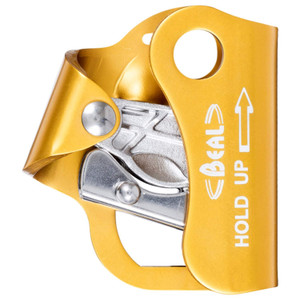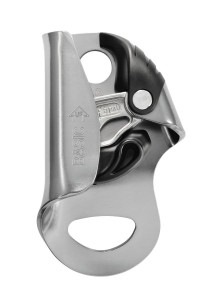
Ascenders are mechanical devices used by climbers to move up a fixed rope. They’re most often used in:
-
Big wall climbing (to jug ropes)
-
Rope soloing
-
Caving
-
Mountaineering (e.g. ascending fixed lines on glaciers or steep terrain)
-
Rescue and rope access work
How Ascenders Work
-
Ascenders use a cam mechanism (often toothed) that slides up the rope but locks when pulled downward.
-
This lets the climber pull themselves upward incrementally by pushing the device up, then weighting it to gain elevation.
Types of Ascenders
| Type | Description & Use Cases | Example |
|---|---|---|
| Handled Ascenders | Large, ergonomic grip; used in pairs with foot loops or chest harness. Best for jugging fixed ropes. | Petzl Ascension, C.A.M.P. Turbohand |
| Chest Ascenders | Worn on the chest harness; helps maintain upright body position while ascending. Used with a handled ascender. | Petzl Croll |
| Mini/Mobile Ascenders | Small and lightweight; used as progress-capture or backup. Not ergonomic for full ascents. | Petzl Micro Traxion, Tibloc |
Basic Setup for Ascending a Rope
Most climbers use a two-point system:
-
Handled ascender attached to a foot loop and the harness.
-
Chest ascender or backup tether to maintain upright position and provide redundancy.
Each step up pushes the handled ascender higher; the climber stands in the foot loop, slides the chest ascender, and repeats.
Advantages of Ascenders
-
Very efficient for rope climbing.
-
Safer and more comfortable than prusik knots on long ascents.
-
Secure locking under load.
Safety Tips
-
Only use on static or semi-static ropes, not dynamic ropes.
-
Use proper backups (like a chest harness or second ascender).
-
Avoid using on frozen or muddy ropes—cams may not grip well.
-
Never descend with an ascender (that’s what descenders are for).
Would you like help choosing an ascender setup for a specific activity like glacier travel, rope soloing, or aid climbing?



